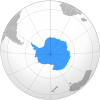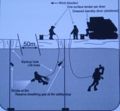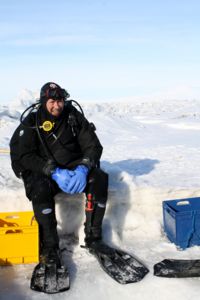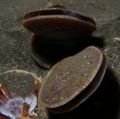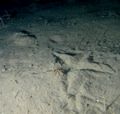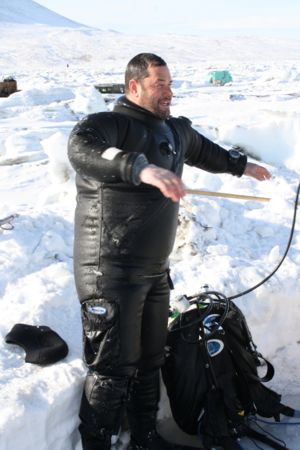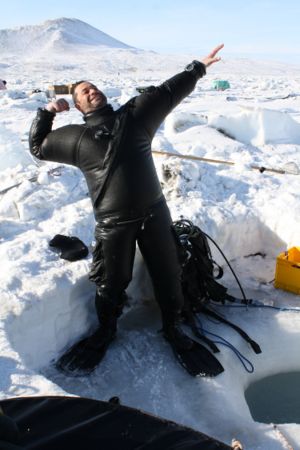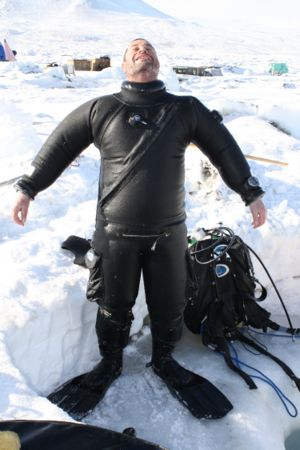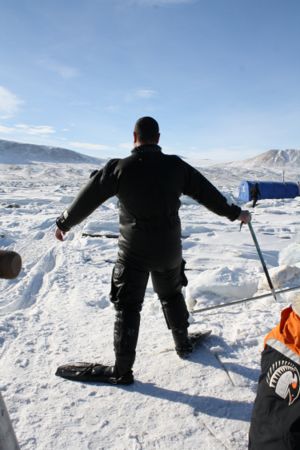Exploration ICEBLOCK
A collaborative exploration of the Chilly Continent
A Look at Antarctic Diving... Scuba diving under the sea ice at New Harbour
VIDEO CLIPS TO VIEW : HAVE A LOOK AT TWO OF THE DIVERS GOING DOWN THE DIVE HOLE, AN INTERVIEW WITH A DIVER AFTER HIS FIRST DIVE FOR THE ANTARCTIC SEASON AND AN EXPLANATION OF ALL THE GEAR A DIVER HAS TO WEAR IN ANTARCTICA:
...A whole range of video clips for you to view, to get a real live sense of just what it is like to dive under 4 metres of sea ice in Antarctica. Exciting, fascinating and definitely not for the faint hearted!...
- Click here to see Pete and Drew's dive down the dive hole: Pete and Drew dive down through 4 metres of ice at New Harbour, Antarctica, 2009
- Click here to see what Chazz saw at New Harbour on his first dive for the season: Chazz's description of life under the sea ice at New Harbour, Antarctica, 2009
- Rod explains all the parts of the diving gear used by NZ divers in Antarctica. A diver has to keep their wits about them and be very familiar with all this apparatus. It sure helps to be well experienced! Click here to view Rod's diving equipment demonstration on Drew who was the 'Back up Diver'. Then scroll down to see photos of Rod using the inflator on his dive suit with style!! :)
- Last dive at New Harbour for the season was out at the safety hole. Luckily we had a beautiful sunny day for the outdoor experience! Click here to see the divers preparation and diving through the safety hole, PLUS a 'Nemetian treasure' brought up from below the sea ice for us to marvel over!!
Chazz in the drysuit under garments (with long merino underneath the puffed suit). The sea water is -2oC so the divers need the warm layers as it gets pretty cold down there!
The drysuit goes over top the under garments. The only thing that gets wet is the diver's head.
Chazz with the full dive gear on.
Dive gloves screw on to ensure they are water tight.
Diagram of diving under the sea ice with the people above tending the ropes connected to the divers.
Rod's serious underwater camera for taking amazing pictures of the coastal Antarctic sea life.
The diver's computer watch (on my wrist!!).
Chazz with the diving video camera. Just as well things don't feel so heavy under the water!!
Tendering the divers. They have a code of pulls on the rope to communicate with the divers. One pull means 'Are you OK?'. A pull in reply from the diver means 'OK', or 'I'm at the bottom'.
Diver coming up the icehole with the camera light
Diver coming up out of the ice hole.
A Look Below the Sea Ice ... Life under 4 metres of sea ice at New Harbour
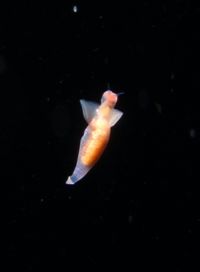
PETE'S PRIZE PHOTO FOR THE ANTARCTIC SEASON: A pteropod, or as the divers call it "ANGEL OF THE SEA"
Check out these photos from under the sea ice of the stunning benthic life here at New Harbour, Antarctica. These were taken with an underwater camera by Pete Notman, one of the divers/scientists with our team here at New Harbour!
Diver in the water under the sea ice.
An Emerald notothen (common name) or Trematomus bernachii (scientific name). These fish were following the diver and he took this photo as he turned around to see what was there.
A Brittlestar (common name) or Ophiospharte gigas (scientific name). When these starfish get stressed they can easily loose their arms!!
An Antarctic starfish, Notasterias armata (scientific name)
A lacy bryozoan, probably from the Camptoplites species.
A pencil urchin (common name) or Ctenocidaris perrieri (scientific name). These urchins are brooders (just like kangaroos are) and carries it's embryos and young under itself in little hollows until they are big enough to run free!
A couple of long Nemertian sea worms (common name) or Parborlasia corrugatus (scientific name). These long worms are nasty predators. They wriggle their way into shellfish and eat them from the inside out!
Antarctic scallops (common name) or Adamussium colbecki (scientific name). These scallops are much thinner and more brittle than the NZ scallops because it is harder for them to form their shells in such cold water.
A heart urchin (common name) from the Abatus genus (scientific name). These are also brooders, caring for their young close to their bodies until they are old enough to survive on their own.
Beautiful delicate crinoid at New Harbour.
Scallops showing their hundreds of eyes around their shell edges. Click on photo to enlarge.
Pencil urchin laden with sponges.
A view from below the sea ice at New Harbour.
A starfish feeding on a scallop.
Rod working under the sea ice at New Harbour.
Pencil urchin hiding under a scallop shell!
Nemetians having a feast.
A large starfish imprint on the sea floor at New Harbour.
Ice formations in the sea at New Harbour.
Look what divers can do with their dive suits!
Rod shows you what happens when you use your dive suit inflator above ground...!!
